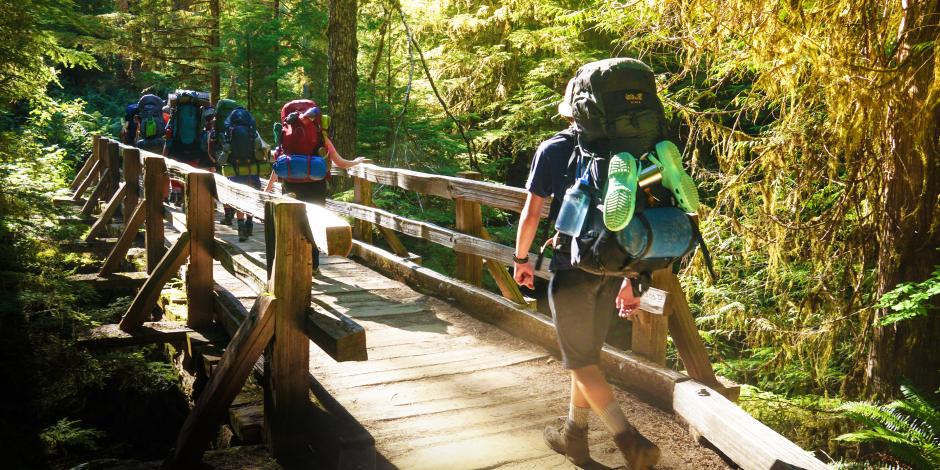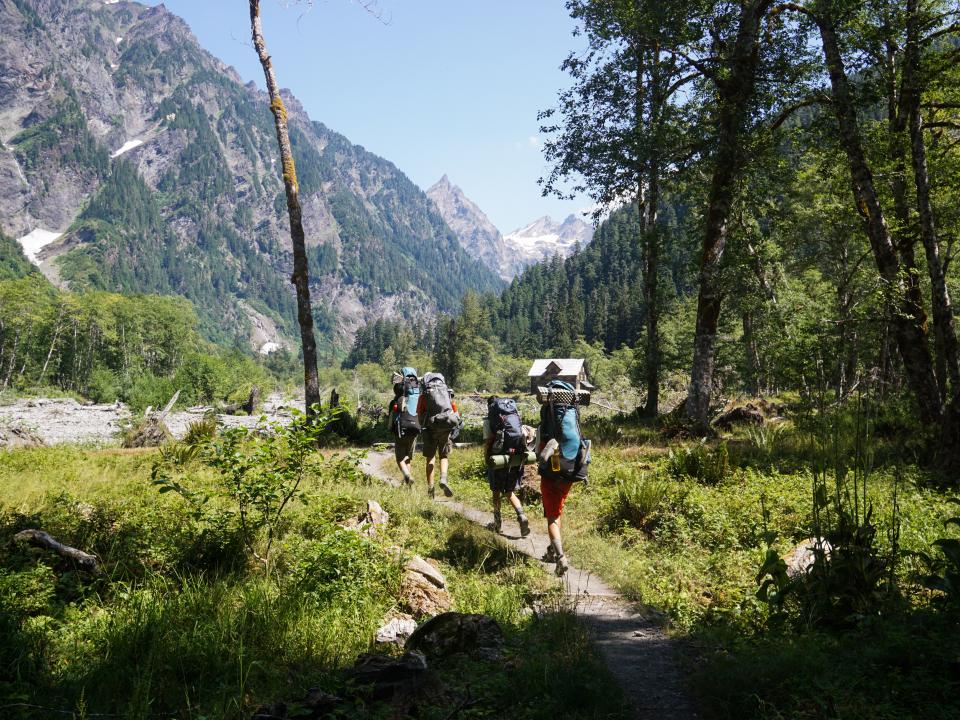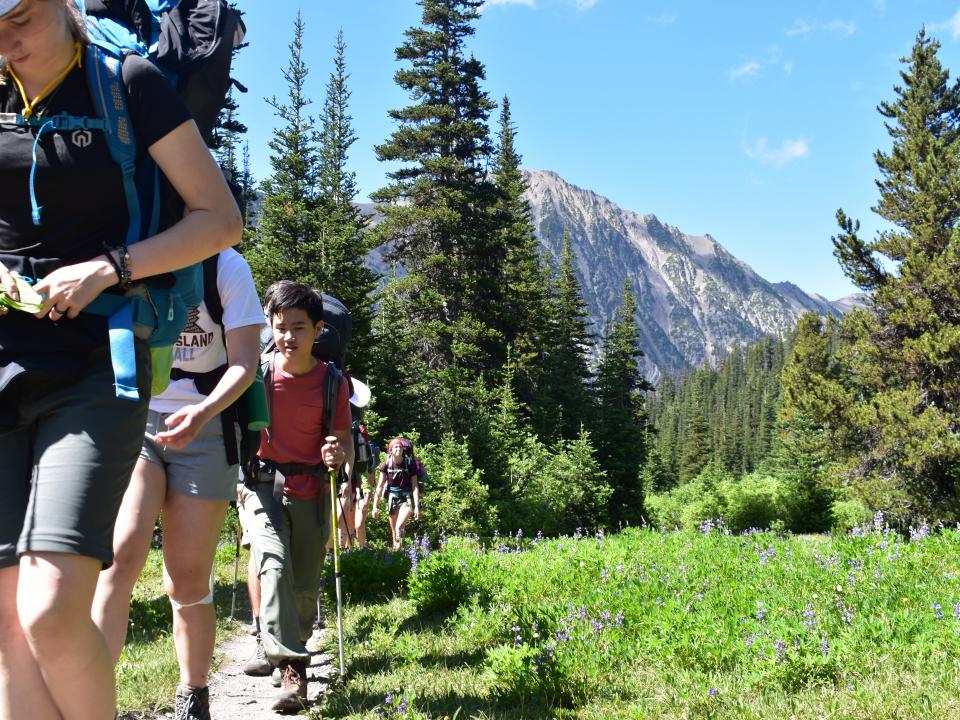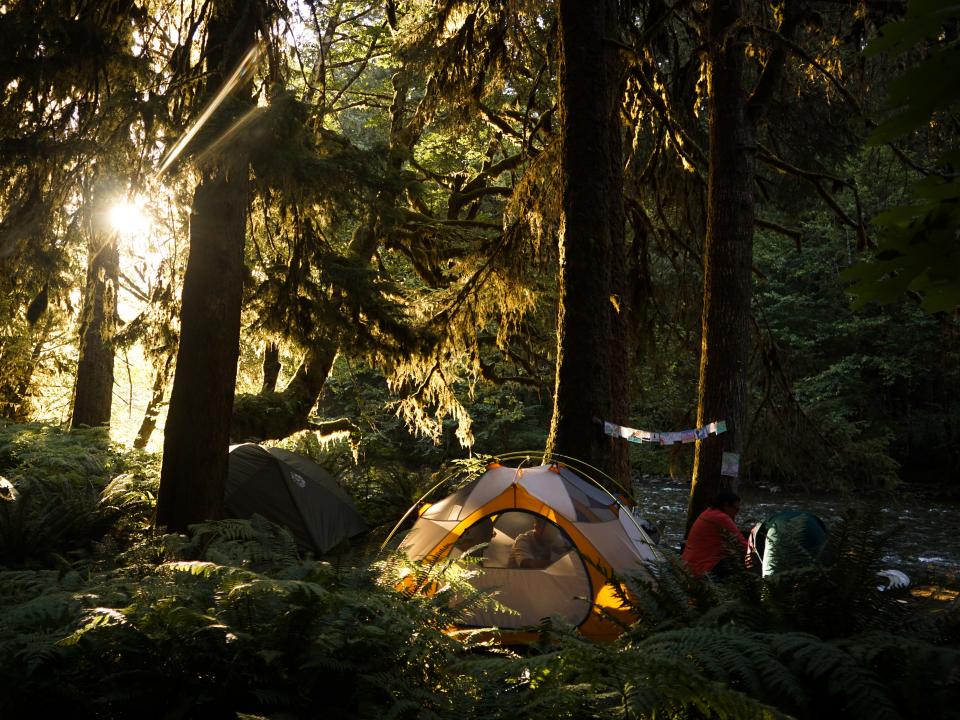Backpacking Tips: The Ultimate Packing List

The most successful backpacking expeditions begin with thoughtful packing. And effectively packed bags start with checklists so that you can ensure you have all the essential gear and clothing. It’s also important to carefully plan what will be packed where. If you’re suddenly caught in a downpour in the backcountry, it’s not ideal to be dumping out your bag and sifting through clothes to find your rain jacket.
Whether you’re joining us on a NatureBridge summer backpacking adventure or have plans for your own expedition this summer, consider this helpful packing guide:
Upper Body Clothing #
One of the biggest things to keep in mind is the varied temperatures that summer can bring. For example, in parks like Olympic and Yosemite, during the day it can be as warm as 70 or 80 degrees, but overnight those temperatures can drop by as much as 40 degrees.
- 1 waterproof rain jacket—this should be a Gore-Tex or seam-sealed coated nylon
- No insulated snow parkas, rain ponchos or plastic rain gear—they will rip easily and not protect you very well in rainstorms
- 1-2 fleece jackets, wool sweaters or down jackets that aren’t too bulky—no cotton!
- 1 long underwear top—lightweight silk, wool or synthetic, no cotton!
- 2 cotton or synthetic t-shirts (avoid tank tops—heavy backpacks chafe bare shoulders)
- Sports bras (as needed)
A good layering system is necessary to accommodate the varying conditions.Katie Draude, NatureBridge Summer Programs Manager
Lower Body Clothing #
The biggest thing to keep in mind when it comes to packing clothing for the lower body is to avoid jeans and cotton.
- 1 pair waterproof rain pants—Gore-Tex or seam-sealed coated nylon
- 1 pair of long underwear bottoms—lightweight silk, polyester or wool, no cotton
- 1 pair of pants—quick-drying hiking pants, no cotton or jeans
- 1 pair of shorts—could be zip-off shorts from hiking pants, no cotton
- 1 pair warm pants for cold nights—fleece pants, pajamas, or sweatpants
- Underwear
Gear #
To make the most of your backpacking experience, you’ll want to ensure that you have the proper gear and that you have selected the appropriate equipment. Quality is not something that you want to hold back on when it comes to the gear that will keep you dry and warm in the backcountry.
- 1 backpacking backpack—capacity of at least 60 liters, internal frame packs preferred
- Your backpack must have sufficient space to carry your clothing, food, and some group gear, including a bear canister
- Your pack must have well-padded shoulder straps and a thick padded waist belt (it will weigh 30-50 lbs)
- 1 sleeping bag with stuff sack—it should be rated to at least 30°F or colder
- Synthetic fill is best because, unlike down and flannel, it insulates even when wet
- A bulky, flannel sleeping bag is not adequate—be sure your sleeping bag can be compressed into its own small stuff sack
- 1 sleeping pad
- 3 large-sized plastic garbage bags for waterproofing gear.
- Flashlight or headlamp with spare batteries—small and lightweight
- Thin, lightweight mattress that insulates you from the cold ground (Ridgerest and Thermarest are examples of the type of sleeping pad to consider; a closed-cell foam or inflatable backpacking pad is acceptable)
Footwear and Headwear #
What’s on your feet may just be the most important piece of equipment you wear. Your hiking boots or athletic shoes should be light but sturdy and most importantly, well broken in. Boots that are too new or even too well-fitted will lead to blisters, which can really cause your backpacking trip to take a turn for the worse. New boots should be worn for at least four weeks before used on a backpacking trip.
- Hiking boots or sturdy athletic shoes—lightweight, leather or nylon/leather exterior, good padding and a rugged sole
- 3-4 pairs of wool or synthetic socks—no cotton socks, they hold onto moisture and can cause blisters
- 1 extra pair of lightweight shoes or sandals—no flip flops
Toiletries and Personal Items #
You’ll want to ensure that you have all that you need for your health and comfort when out on the trail. Items like bug spray and sunscreen are also important.
- Personal medications—recommended to bring 2 sets of each that you take (in case one gets misplaced or damaged)
- Prescription glasses, including a backup pair, in a hard case
- Sunglasses—they should be dark and filter ultraviolet light
- Toiletries—toothbrush, small toothpaste, lip balm (at least SPF 15), small tube of sunscreen (SPF 30 or higher) and bug repellant
- Feminine hygiene products
Additional Equipment
- 2 water bottles—these should be quart- or liter-sized with leak-proof screw-top lids
- 1-2 bandanas—these serve as your “plate” for trail lunches and other personal needs
- Small mug
- Bowl
- Spoon
- Trekking poles—suggested for students with knee or ankle issues
- Camera—at NatureBridge we don’t allow cell phones on the backpacking portion of the course so cameras are encouraged for photography
- Small brush or comb
- Small paperback book or field guide
- Personal travel journal and pen/pencil
Additional equipment that all backpackers need, but that NatureBridge provides for all summer backpacking trips, includes:
- First aid equipment
- Map and compass
- Stoves, fuel, group cooking equipment
- Tents
- Bear canisters
- Toilet paper, soap, hand sanitizer
- Water purification
- Permits or radios
- All food and snacks
Preparedness is the most important part of backpacking. Once you have your clothing, gear and supplies, you’ll be ready to hit the backcountry.




